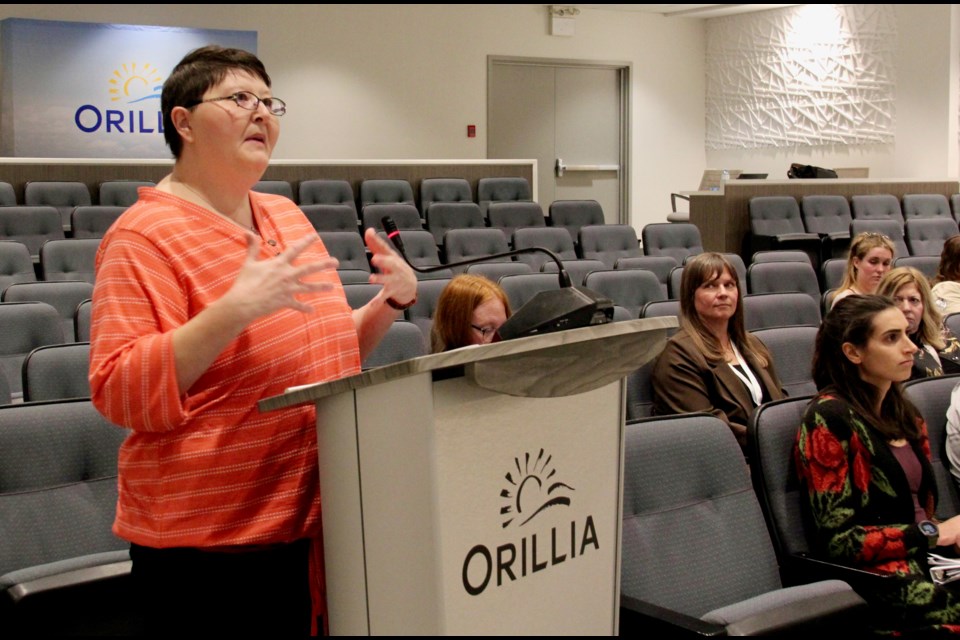Orillia is projected to grow to a population of 42,200 by 2031, and that will spark a need for more housing — especially affordable housing.
The city is expected to grow — in terms of population — by 26 per cent in the 10-year period between 2021, when the population was 33,411, and 2031, according to a housing needs assessment report presented to city council on Monday.
"It is projected that 18,217 household units are required by 2031 to house the upcoming population. Any deviation from the projected units will increase the deficit should the growth in the city meet the projections," reads the report written and presented by Janette McGee, the city's housing co-ordinator.
The study revealed housing supply has not kept pace with growth and demand. Census data from 2021 shows Orillia needed several hundred homes for its population at that time.
The need for affordable housing is more acute in Orillia than in other areas of Simcoe County because the average household income in Orillia ($83,000) is $27,000 less than the Simcoe County average ($110,000).
Orillia also has a higher percentage of single parents (24 per cent) than Barrie (21 per cent) and the county (16 per cent).
The city's study showed close to half (48 per cent) the population spends more than 30 per cent of income on housing. That is up more than 20 per cent from the 2021 census data, which showed 27 per cent of households in Orillia spent more than 30 per cent of their income on housing. The county average is 23 per cent. The federal definition of affordable housing is when people spend 30 per cent or less of their before-tax income on housing.
Anne Tassé, an Orillia resident living on the Ontario Disability Support Program (ODSP), spoke to council at Monday's open public forum, asking if the housing needs assessment was taking into consideration local people who are already living on ODSP and Canada Pension Plan disability benefits and can't find affordable places to live.
"We seem to be put to the side quite often," she said.
Tassé, who cannot work due to post-traumatic stress disorder, said she's lived in Orillia all her life and she's been on the list for subsidized housing for 15 years "with no end in sight."
She said her shelter allowance on ODSP is $567 per month.
"There is nowhere in Orillia, not even a room, that I can rent for that," she said.
She was able to secure an apartment in the County of Simcoe's affordable housing complex at 250 West St. N. but says, "it's still not affordable.
"I'd just like to make sure we're on the same page, that everybody matters," she said.
Council, as per the open public forum procedure, did not make any comments after Tassé's presentation.
After McGee's presentation, Coun. Tim Lauer was the only member of council who asked a question: If Orillia is short so many houses, where are all the people currently living?
McGee said 200 people are living in need of shelter, with some in encampments, and others in vehicles.
"Are we talking about people living with relatives?" Lauer asked.
"Yes, and also young adults who are living with their parents. Some are commuting from outside Orillia but want to work and live here," McGee said.
Orillia can access $11 million in infrastructure funding from the federal government through the Canada Community-Building Fund now that the mandatory housing needs assessment is complete.
The next step is for staff to bring forward "local housing solutions" to the Oct. 20 council meeting.
The report also covered the city's poverty reduction action plan. Orillia set up a poverty reduction working group in 2024 with Coun. Janet-Lynne Durnford as the co-chair. Its first meeting was held in February with the goal of implementing actions in six areas.
The plan calls for people to have access to housing, food, transportation, youth services, arts and recreation, and education and training.
The next step for the working group is to report back to council before the end of 2025 with evidence-based findings and recommendations.
Council passed a motion to receive the report.




